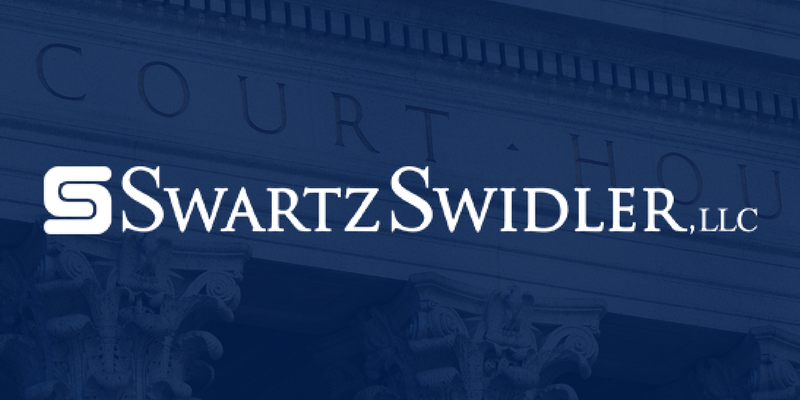The Occupational Safety and Health Act (OSH Act) was enacted in 1970 and created by the Occupational Safety and Health Administration (OSHA). OSHA is the federal agency tasked with issuing regulations under the OSH Act and enforcing them. Under the OSH Act, states can pass their own safety plans for approval by OSHA, but some states operate under the federal regulations. In New Jersey, there is an approved state plan that only applies to local and state public employers. Businesses operating in the private sector are covered by federal OSHA regulations. Here is some information about the OSHA safety regulations that you should know from the attorneys at Swartz Swidler.
What Are OSHA Regulations?
The OSH Act establishes safety laws for workplaces. It was passed to improve the safety of workplaces across the U.S. because of the large number of serious injury and fatality accidents that were occurring during that time. OSHA was also created by the OSH Act, and the agency is tasked with creating regulations and enforcing them under the OSH Act. The regulations it creates are safety standards that employers must follow to maintain safe working conditions. Employers that violate the safety rules can face fines and other penalties.
At the highest level, employers are required to establish and implement health and safety policies by OSHA’s standards. Employees are also encouraged to play an active role in creating safety policies in their workplaces.
OSHA has released many standards that apply to employers within different industries. Employers might have to follow multiple safety regulations, depending on the industry in which they operate. While the standards vary, they all are designed to protect workers and to help to prevent the risk of workplace injuries and fatalities.
Employers are responsible for identifying potential hazards within their workplaces and checking to see whether OSHA has issued specific standards for those hazards. They should create policies to address those hazards and conduct regular safety training sessions with their employees so that they understand how to follow the OSHA guidelines and protect themselves.
OSHA also has requirements for signage. Employers can use compliant safety signs as an effective way to remind employees of dangers and to help to prevent workers from entering dangerous situations. Safety signs, safety equipment, personal protective equipment, and training all combine to help facilitate the creation of a comprehensive safety plan.
Frequently Violated Standards
There are several OSHA standards that are commonly cited for violations. Each year, the standards on fall protection, respiratory protection, and lockout/tagout procedures are at the top of the list of violations that have been reported.
Under the fall protection standard for employers in the construction industry, companies are required to provide fall protection for their employees. There are specific requirements for the types of fall protection that must be used and how it should be constructed. Areas in which fall protection must be used include areas with unprotected edges and sides, roofs, holes, and other areas in which workers will be working at height and could sustain serious fall accident injuries. Some examples of fall protection include safety nets, scaffolding, personal fall arrest equipment, positioning systems, and other similar systems. Each type of fall protection has its own standard to provide guidance to employers.
Lockout/tagout procedures are also frequently cited in OSHA violations each year. These procedures are designed to prevent workers from being seriously injured or killed when working near machinery. The lockout/tagout standard establishes safety requirements for how equipment and machines should be controlled when they have the potential to seriously injure workers when they are started or release stored energy. There are also specific logout/tagout programs for specific industries, including electric power generation and mills.
Respiratory protection is another commonly cited OSHA standard in annual violations. Under this standard, employers must provide respiratory protection to certain workers in general industry, construction, shipyards, longshoring, and others. The standard requiring respiratory protection is in place to protect workers from inhaling contaminated air and toxic exposures. The standard includes information about when workers are not required to use respiratory protection but are encouraged to do so anyway.
OSHA Investigations
Employers are required to report workplace injury and fatality accidents to OSHA. When a serious injury or fatality accident occurs, OSHA will conduct an investigation. This involves an OSHA representative visiting the site where the accident occurred, conducting an inspection, and carefully considering the specific area where the incident happened. Workers can also report violations of the safety standards to OSHA.
When workers report safety violations, OSHA will categorize them. If it determines that it falls into category one, the agency will conduct an inspection. Category one violations include serious accidents in which a fatality occurred or that required the hospitalization of two or more workers. Violations falling into category two might or might not be investigated by OSHA.
Once an investigation is completed, OSHA will determine whether or not the company violated the safety standards. If the employer is found to have violated the standards, the employer will be assessed fines and other penalties and will have to make corrections to come into compliance.
Retaliation
Employees have the right to report safety violations to OSHA and to participate in OSHA investigations. Employers are prohibited from retaliating against workers for filing safety complaints or for participating in an OSHA investigation. If an employer takes adverse action against an employee out of retaliation, the employee can file a retaliation lawsuit against the employer. This might allow the employee to recover damages, including lost wages, non-economic damages, and attorney’s fees. He or she might also be reinstated to his or her former job.
Talk to the Lawyers at Swartz Swidler
If you believe that your employer has violated OSHA or retaliated against you for reporting safety violations, you should consult an employment lawyer at Swartz Swidler. We can review your case and help you understand your rights. Call us today at 856-685-7420 to request a free consultation.








